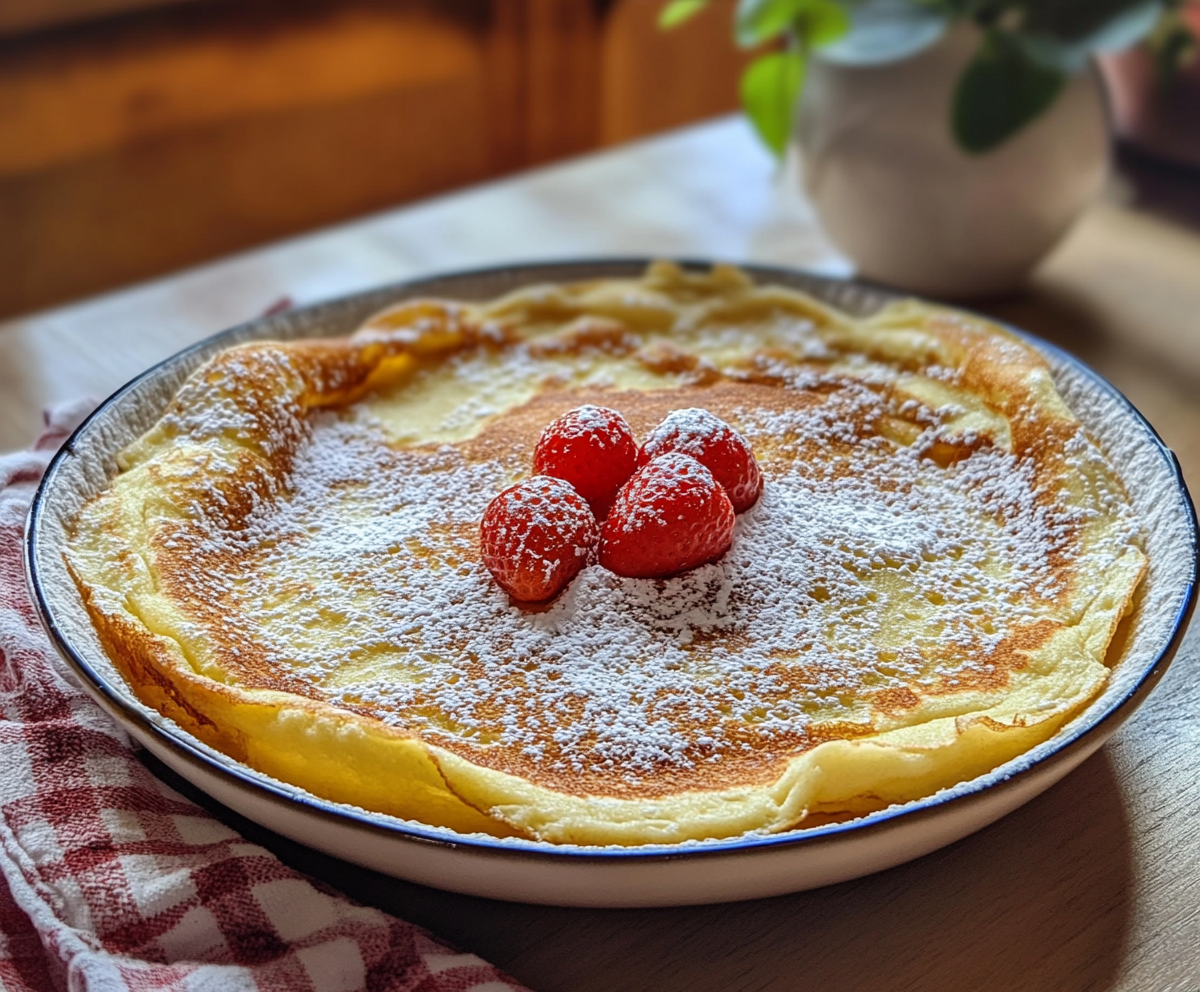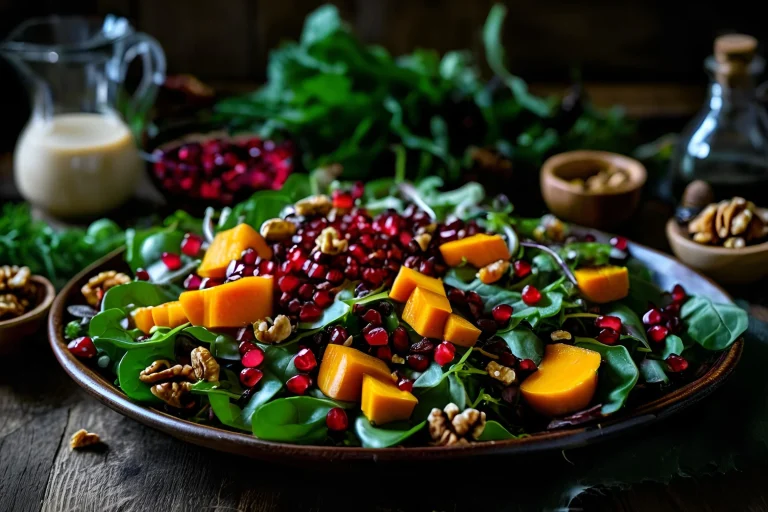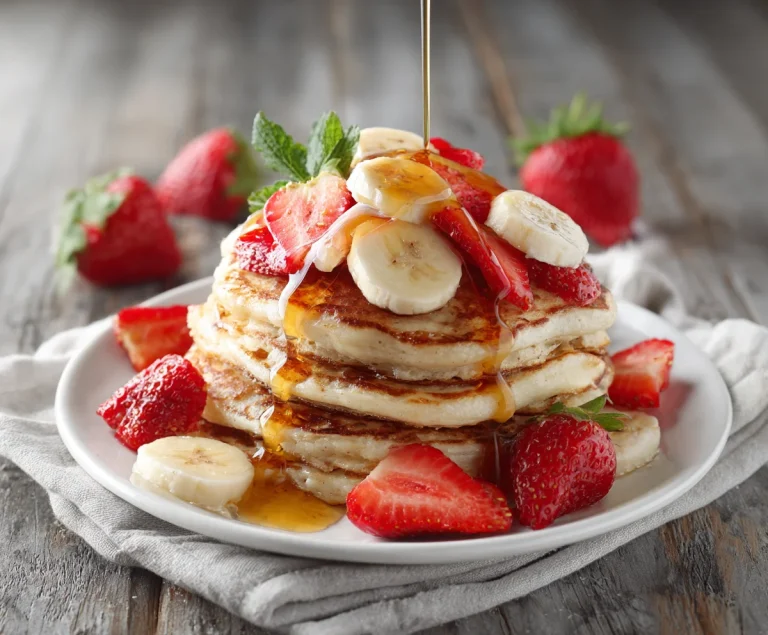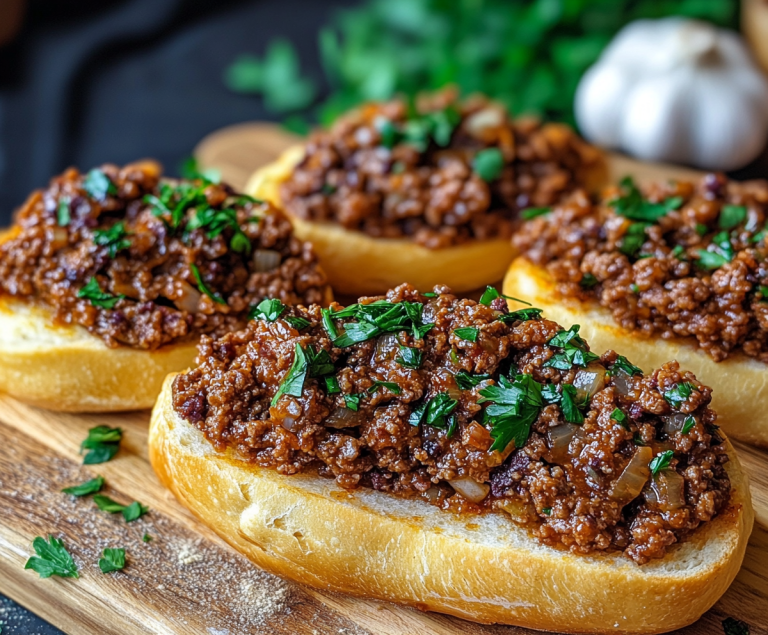Introduction
German pancakes, often referred to as Dutch Babies, are a true breakfast delight. They are not your average pancake. These pancakes are baked in the oven, giving them a light, airy texture that’s crispy around the edges and soft in the center. The best part about making German pancakes is how simple and effortless the whole process is. In just 30 minutes, you can create a stunning, golden-brown pancake that will impress anyone at the table. Whether you’re a seasoned cook or a beginner, this recipe will show you how to make the perfect German pancake with minimal ingredients and effort.
German pancakes are a wonderful change from your traditional stovetop pancakes. They don’t require flipping or constant attention. Instead, all you need to do is mix your ingredients, pour the batter into a hot pan, and let the oven do the rest. It’s the perfect option when you want a stress-free breakfast that’s both delicious and visually impressive. With the ability to customize it with your favorite fruits, syrups, or even a savory twist, this recipe can be made to suit every taste.
Let’s dive into the simple steps and ingredients that make up this classic dish. You’ll soon find that German pancakes are a breakfast you’ll return to again and again.
Ingredients Needed
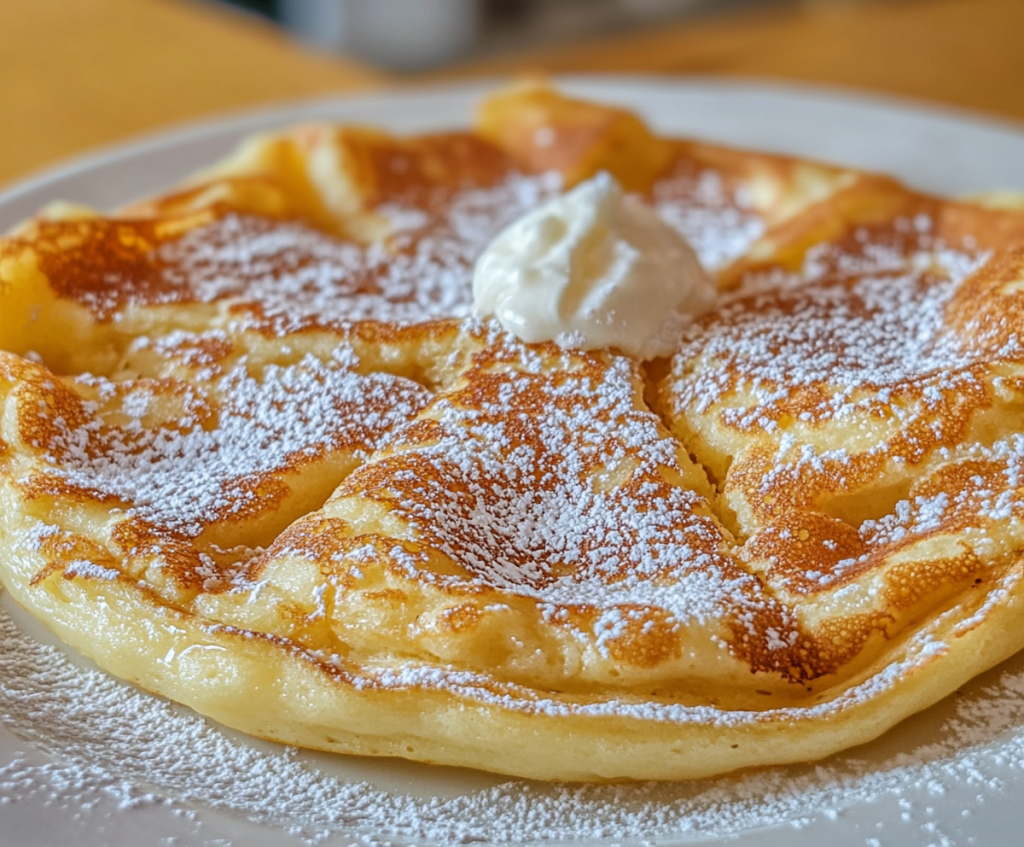
Making a German pancake requires only a handful of basic ingredients that you likely already have in your pantry. You’ll need eggs, milk, flour, sugar, butter, and a bit of vanilla extract for flavor. These ingredients combine to create the soft and fluffy texture of the pancake.
Here is a breakdown of the ingredients and their calorie count:
| Ingredient | Amount | Calories |
|---|---|---|
| Eggs | 3 large | 210 |
| Milk | 1 cup (240ml) | 150 |
| All-purpose flour | 1 cup (120g) | 455 |
| Sugar | 2 tbsp (25g) | 100 |
| Salt | 1/4 tsp | 0 |
| Vanilla extract | 1 tsp | 12 |
| Butter | 4 tbsp (56g) | 400 |
| Powdered sugar (optional for serving) | 1 tbsp | 30 |
Total Calories (without powdered sugar): ~ 1317 calories
Calories per serving (based on 4 servings): ~ 330 calories
These ingredients come together in a perfect harmony to give you a fluffy pancake with a slightly crispy texture around the edges.
Step-by-Step Cooking Instructions
The process of making a German pancake is as easy as it is rewarding. Here’s a detailed step-by-step guide to ensure you get the perfect pancake every time.
Begin by preheating your oven to 425°F (220°C). Place a 9-inch or 10-inch cast-iron skillet, or any oven-safe pan, into the oven as it preheats. This is an essential step because the batter needs to go into a hot pan to achieve the right texture.
While the oven is heating, take a large bowl and whisk together the eggs, milk, flour, sugar, salt, and vanilla extract. Make sure the mixture is smooth with no lumps. You can use an electric mixer or a hand whisk to get the batter smooth and well combined. The batter will be quite thin, which is normal and necessary for the pancake’s texture.
Carefully remove the preheated skillet from the oven. Be sure to wear oven mitts to protect yourself from the hot handle. Add the butter to the skillet and let it melt completely. As the butter melts, tilt the pan to ensure the butter coats the entire bottom and sides of the skillet.
Once the butter is melted, pour the batter into the skillet over the butter. You should hear a slight sizzle as the batter hits the hot pan. Immediately return the skillet to the oven.
Let the pancake bake in the oven for about 20 to 25 minutes. You’ll notice it starting to puff up as it bakes, which is one of the defining features of a German pancake. The edges will turn golden brown and slightly crisp. The middle will remain soft and airy, creating a delicious contrast of textures.
Once your German pancake has finished baking, remove it from the oven. The pancake will begin to deflate slightly as it cools, but don’t worry—that’s completely normal. Dust the pancake with powdered sugar if you like, or skip that step if you prefer a less sweet option. Serve immediately with fresh fruit, syrup, or whatever toppings you like.
Tips for Customizing the Recipe
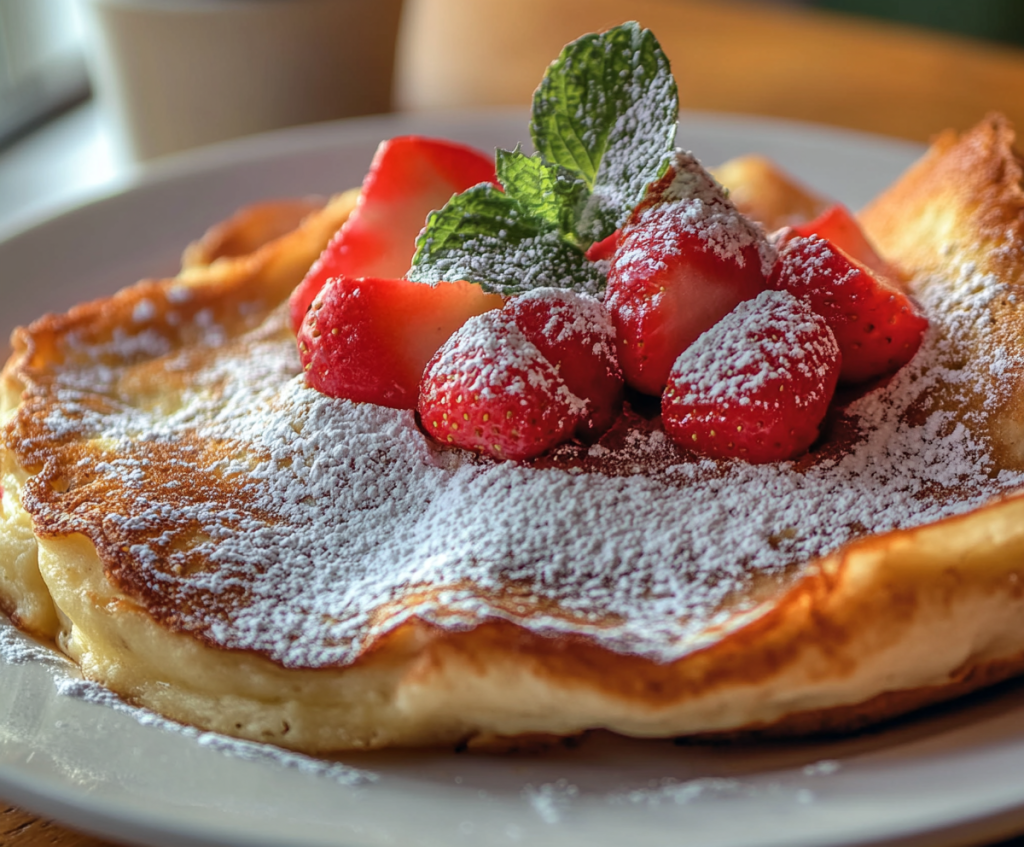
One of the best things about German pancakes is how versatile they are. You can easily customize the recipe to suit your taste or the ingredients you have on hand.
Add fresh fruits like berries, banana slices, or caramelized apples to the batter before baking. The fruits will cook down and become tender, adding a delicious burst of flavor to the pancake.
To elevate the flavor, you can sprinkle in some ground cinnamon, nutmeg, or even a little lemon zest into the batter. These warm spices will make the pancake taste cozy and comforting.
Want something less sweet? Omit the sugar and vanilla extract, then add ingredients like shredded cheese, sautéed onions, or crumbled bacon to the batter for a savory twist. You can also top it with a dollop of sour cream for extra creaminess.
If you need to make this recipe dairy-free, simply swap out the milk for a non-dairy milk such as almond, oat, or coconut milk. You can also use a dairy-free butter substitute.
To make this recipe gluten-free, substitute the all-purpose flour with a 1:1 gluten-free flour blend. Be sure to check that your milk and butter substitutes are also gluten-free.
Nutritional Information (Per Serving)
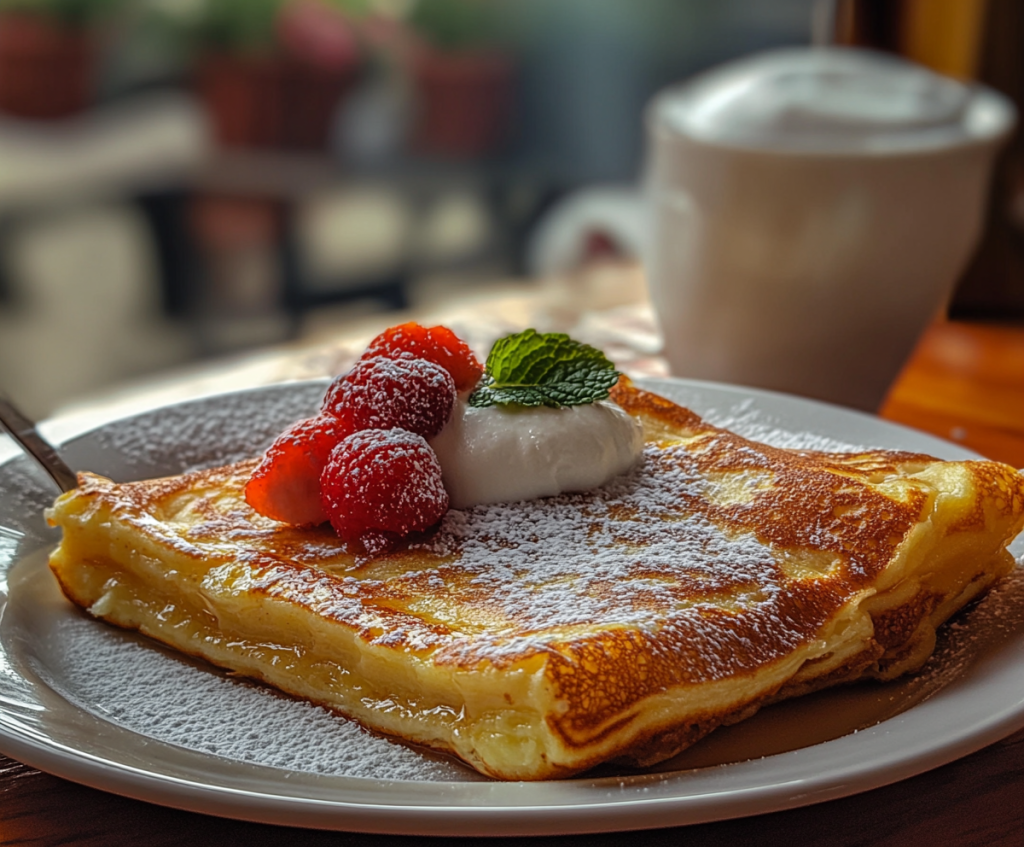
To give you a better idea of what you’re eating, here’s a breakdown of the nutritional content of one serving (based on 4 servings total).
| Nutrient | Amount |
|---|---|
| Calories | 330 |
| Protein | 9g |
| Carbohydrates | 45g |
| Sugars | 5g |
| Fat | 14g |
| Saturated Fat | 8g |
| Cholesterol | 135mg |
| Sodium | 240mg |
| Fiber | 1g |
| Calcium | 70mg |
| Iron | 2mg |
The nutritional information provided is for the basic recipe, without any added toppings like fruit or syrup. You can easily adjust the calories by adding or subtracting certain ingredients based on your preferences.
Serving Suggestions
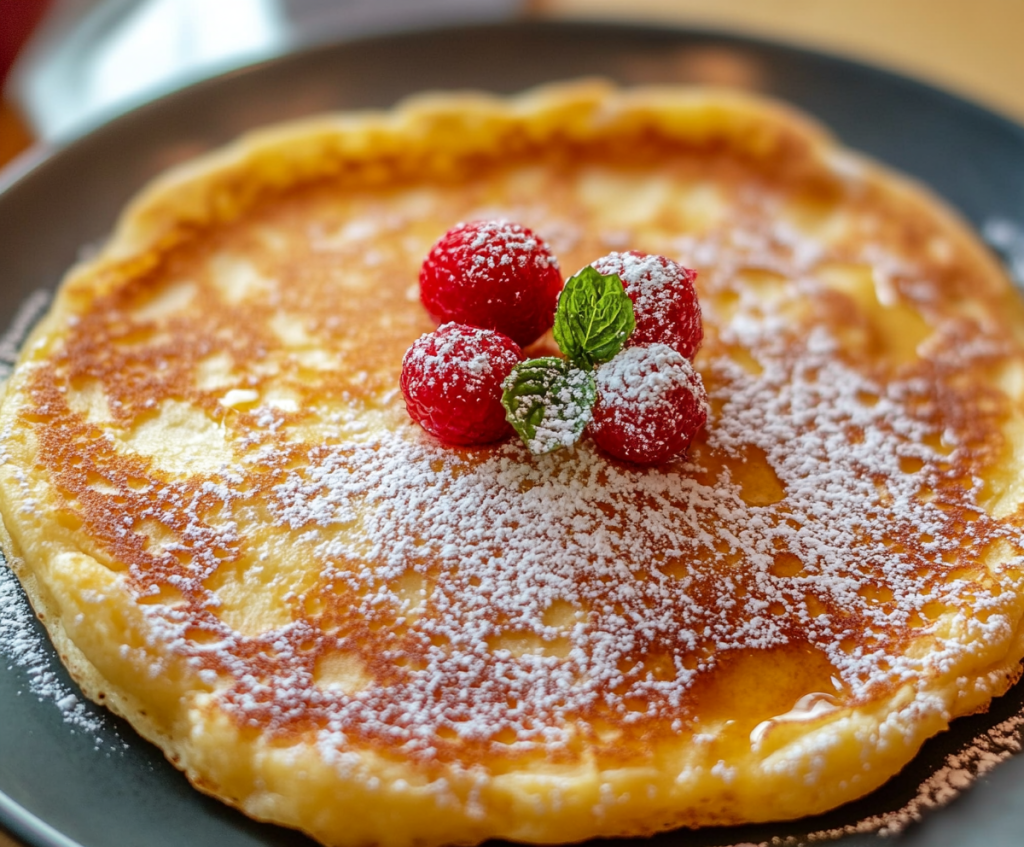
There are countless ways you can serve your homemade German pancake. Here are a few ideas to help you create the perfect breakfast spread:
Top your pancake with fresh berries, sliced bananas, or sautéed apples. The sweetness and freshness of the fruit pair perfectly with the rich pancake.
You can never go wrong with a drizzle of pure maple syrup. The syrup adds a classic, sweet flavor that complements the pancake’s airy texture.
For a little indulgence, add a dollop of freshly whipped cream on top. It adds a creamy richness that enhances the pancake’s lightness.
Add a crunch by topping your pancake with toasted nuts such as almonds, walnuts, or pecans. A sprinkle of chia seeds or flaxseeds can also give the pancake a healthy boost.
For a creamy, tangy addition, serve your German pancake with a spoonful of Greek yogurt or a light drizzle of honey-sweetened yogurt.
Conclusion
Making a German pancake is one of the easiest and most rewarding ways to enjoy breakfast. With just a few simple ingredients and a little bit of time, you can create a pancake that is light, fluffy, and full of flavor. Whether you prefer it sweet or savory, there’s no limit to the ways you can enjoy this dish. So, the next time you’re craving something different from your usual pancakes, give this recipe a try. You’ll be amazed at how simple it is to make, and how delicious it turns out. Enjoy your homemade German pancake, and watch as it quickly becomes your new breakfast favorite!

